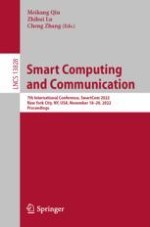This book constitutes the proceedings of the 7th International Conference on Smart Computing and Communication, SmartCom 2022, held in New York City, NY, USA, during November 18–20, 2022.
The 64 papers included in this book were carefully reviewed and selected from 312 submissions.
SmartCom 2023 focus on recent booming developments in Web-based technologies and mobile applications which have facilitated a dramatic growth in the implementation of new techniques, such as cloud computing, edge computing, big data, pervasive computing, Internet of Things, security and privacy, blockchain, Web 3.0, and social cyber-physical systems.
The conference gathered all high-quality research/industrial papers related to smart computing and communications and aimed at proposing a reference guideline for further research.
